Um guia rápido para o Parque Nacional do Vale da Morte
O que fazer e ver no Parque Nacional do Vale da Morte
Resumo
Abrangendo mais de 3,4 milhões de acres, o Parque Nacional do Vale da Morte abriga uma variedade de maravilhas geológicas, como dunas de areia, cânions e montanhas. Neste guia, exploraremos tudo o que você precisa saber para aproveitar ao máximo sua visita ao Vale da Morte. Das principais atrações a atividades ao ar livre, informações para visitantes e muito mais, nós temos tudo o que você precisa.
Introdução ao Parque Nacional do Vale da Morte
O Parque Nacional do Vale da Morte é um destino único e fascinante que oferece aos visitantes um vislumbre da beleza da paisagem do deserto. O parque está localizado no leste da Califórnia, na fronteira com Nevada, e abriga uma gama diversificada de formações geológicas e maravilhas naturais. Da imponenteCordilheira Panamintpara as extensas salinas eBacia Badwater, há muito para ver e explorar no parque.
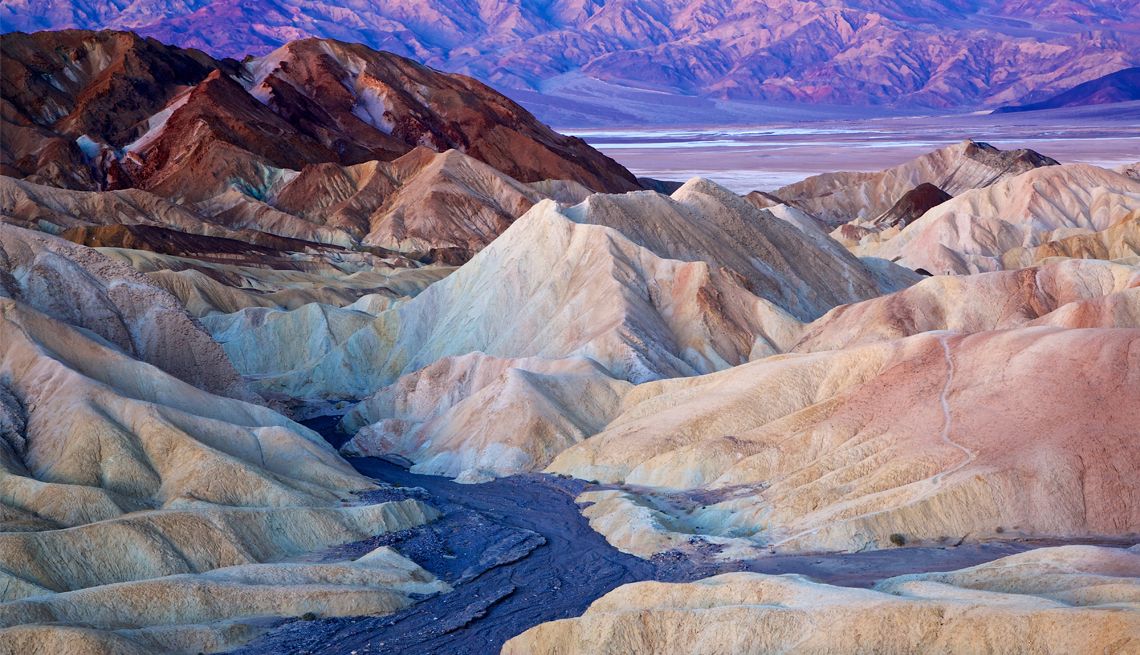
Clima e Tempo
O Vale da Morte é conhecido por seu calor extremo, com temperaturas de verão frequentemente excedendo 100 graus Fahrenheit (ou 38 graus Celsius), com a temperatura mais alta registrada excedendo até 130 graus Fahrenheit (ou 54,4 graus Celsius). Apesar do calor, o parque recebe chuvas mínimas, tornando-se um destino popular durante os meses mais frios. A melhor época para visitar é durante o outono e a primavera, quando as temperaturas são mais toleráveis.
Apesar do clima severo, o parque abriga uma variedade de espécies únicas e fascinantes de plantas e animais. Os visitantes podem avistar carneiros selvagens do deserto, coiotes e raposas-do-mato, bem como uma variedade de espécies de pássaros, como corredores-de-estrada e águias-reais.
Principais atrações e pontos turísticos
Death Valley é um parque nacional localizado na Califórnia, conhecido por suas paisagens únicas e sobrenaturais. Aqui estão algumas das principais atrações e marcos para visitar durante sua viagem:
Bacia Badwater
Uma visita ao Vale da Morte não estaria completa sem ver Badwater Basin, o ponto mais baixo da América do Norte, a 282 pés abaixo do nível do mar. As salinas se transformam em padrões impressionantes de branco que parecem se estender para sempre. A bacia foi formada por uma combinação de processos geológicos, incluindo a evaporação de lagos antigos e o movimento de placas tectônicas. As salinas abrigam microrganismos únicos adaptados ao ambiente hostil, tornando-se um lugar fascinante para explorar. À noite, as estrelas brilham intensamente no alto, proporcionando uma experiência mágica.
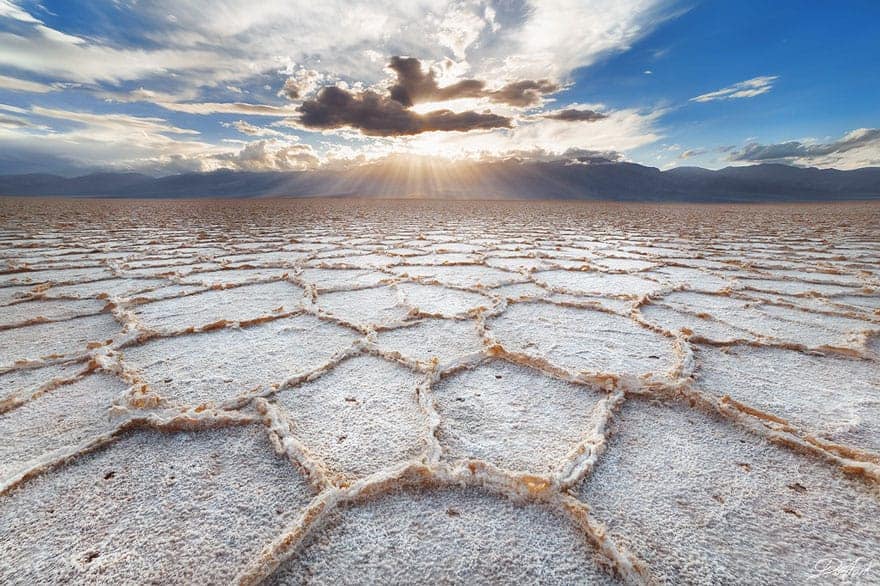
Ponto Zabriskie
Zabriskie Point oferece aos visitantes vistas panorâmicas das paisagens variadas do Vale da Morte, incluindo as colinas douradas, Dante's View e Manly Beacon. As cores das formações rochosas deixarão você impressionado. O ponto recebeu o nome de Christian Zabriskie, vice-presidente e gerente geral da Pacific Coast Borax Company, que ajudou a desenvolver a indústria de mineração na área. O ponto também foi destaque em vários filmes, incluindo o filme de 1970 "Zabriskie Point" de Michelangelo Antonioni. Vá para Zabriskie Point no início da manhã para ver um dos mais belos nasceres do sol do Vale da Morte.
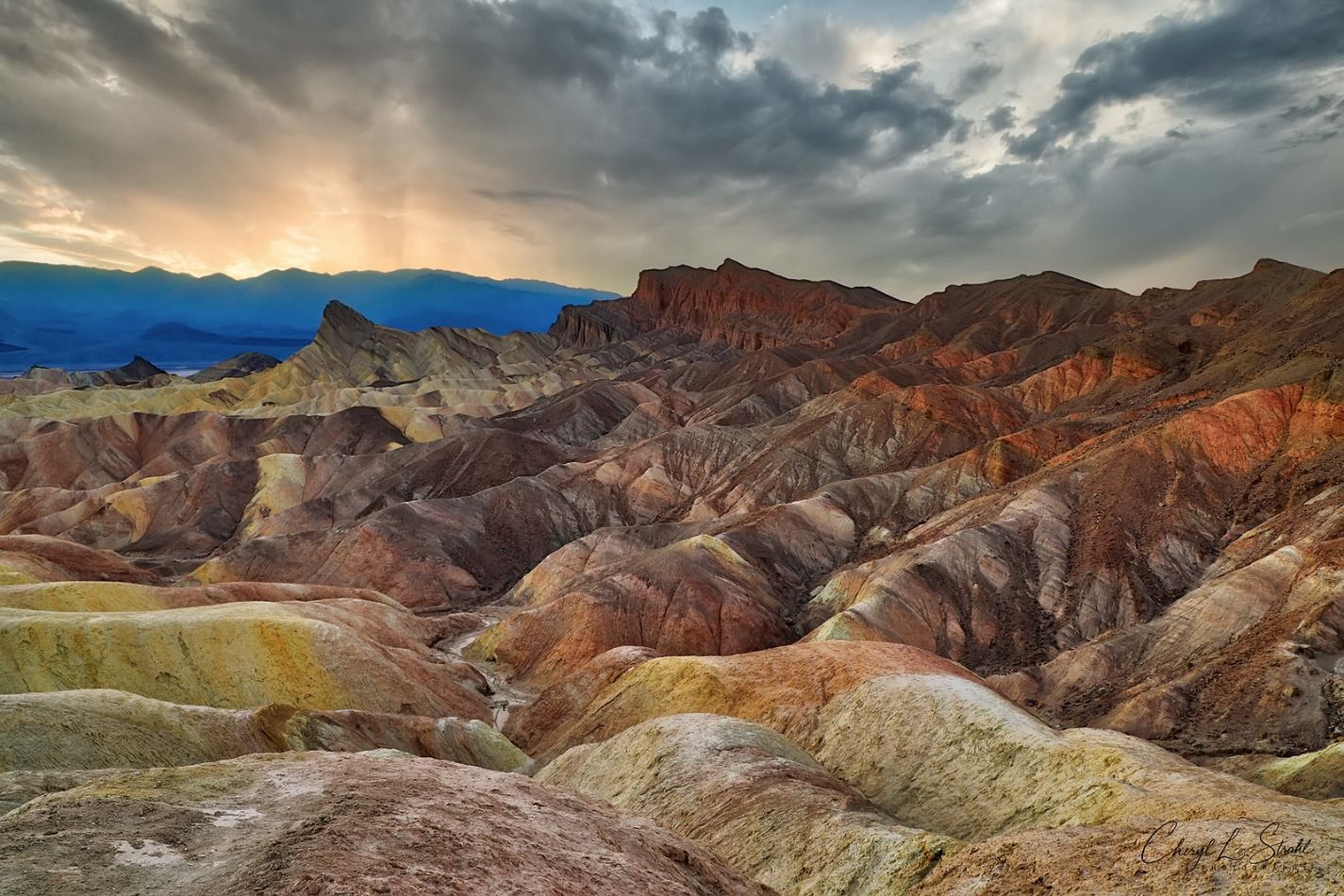
Dunas de areia planas de Mesquite
Para aqueles que amam caminhadas na areia, Mesquite Flat Sand Dunes é um local de visita obrigatória no Vale da Morte. As dunas atingem mais de 100 pés de altura em algumas áreas, proporcionando uma caminhada cênica e mágica. As dunas foram formadas pela erosão das Montanhas Cottonwood e pelo transporte de partículas de areia pelo vento. As dunas abrigam uma variedade de vida selvagem, incluindo o lagarto de dedos franjados e a cascavel sidewinder. Também é um local privilegiado para aqueles que querem experimentar o sandboard. Mesquite Flat Sand Dunes também é um ótimo local para observar as estrelas, então se você for visitar em algum momento perto da lua nova, considere ficar para ter uma vista deslumbrante do céu noturno.
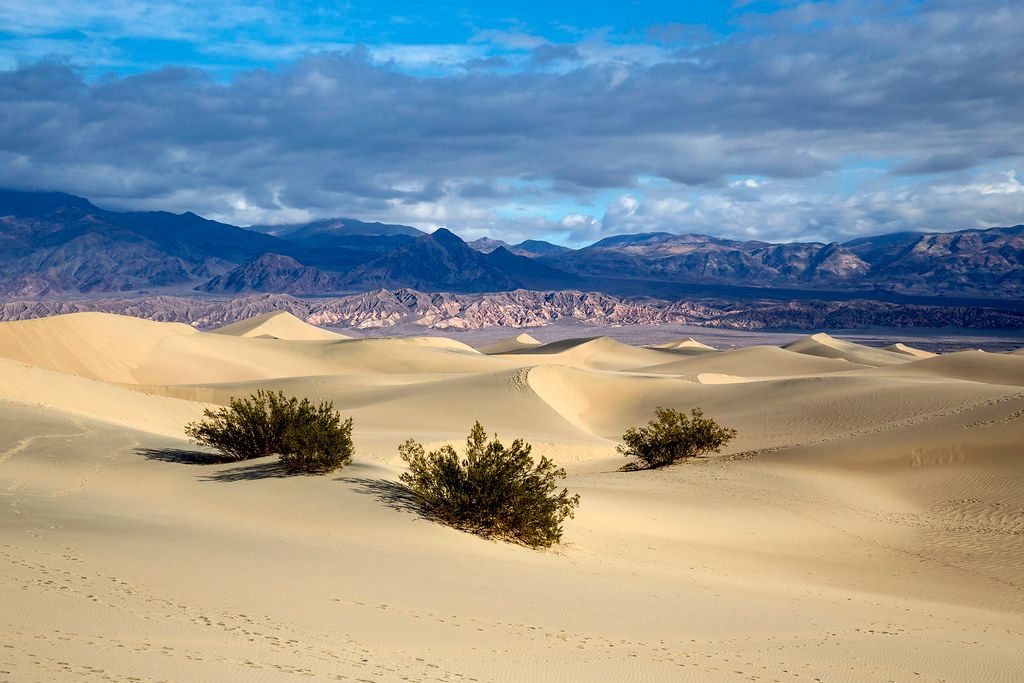
Visão de Dante
Localizado no cume das Black Mountains, o Dante's View oferece vistas panorâmicas de todo o parque, incluindo Badwater Basin e as montanhas além. O mirante recebeu o nome de Dante Alighieri, autor de A Divina Comédia, e foi visitado pela primeira vez por um grupo de garimpeiros no século XIX. O nascer e o pôr do sol são especialmente deslumbrantes deste ponto de vista, pois as cores da paisagem mudam com a mudança da luz.

Paleta do artista
Os depósitos minerais coloridos da Artist's Palette são um banquete para os olhos. Aqui, você encontrará uma deslumbrante variedade de cores nas formações rochosas, incluindo verdes, azuis, rosas e roxos. A vista é especialmente deslumbrante durante a hora dourada, quando as cores são iluminadas pelo sol poente. A paleta foi formada pela atividade vulcânica e pela oxidação de metais nas rochas. As cores são causadas pela presença de diferentes minerais, incluindo ferro, manganês e cobre.

Atividades e aventuras ao ar livre
Se você está procurando por uma aventura, o Parque Nacional do Vale da Morte tem muitas atividades ao ar livre para oferecer. De caminhadas a observação de estrelas, há algo para todos. Aqui estão algumas das principais atividades para adicionar ao seu itinerário:
Trilhas para caminhadas
Com mais de 700 milhas de trilhas para caminhadas, o Vale da Morte oferece infinitas oportunidades de aventura. Seja você um caminhante experiente ou iniciante, há uma trilha para você. As caminhadas imperdíveis incluemCânion de Outono,Cataratas de Darwin, e Cânion Dourado, todos oferecendo paisagens deslumbrantes e uma chance de chegar perto das formações naturais únicas do Vale da Morte.
Para uma caminhada mais desafiadora, considere enfrentarPico do Telescópio, o ponto mais alto do Vale da Morte a 11.049 pés. A caminhada é uma viagem extenuante de ida e volta de 14 milhas, mas as vistas do topo valem a pena.
Se você for fazer trilhas no Vale da Morte, certifique-se de ter água suficiente e mantenha-se hidratado. Você também deve começar a caminhar mais cedo para vencer o calor extremo do meio-dia.
Fora da estrada
O Vale da Morte é um ótimo lugar para entusiastas de off-road, com várias rotas que oferecem passeios emocionantes e cênicos. A rota Titus Canyon, por exemplo, é uma estrada de mão única que leva os motoristas por um desfiladeiro incrível, passando por minas abandonadas e cidades fantasmas, e eventualmente leva de volta à entrada do parque.
Se você está procurando por uma aventura off-road mais desafiadora, considere dirigir pela Lippincott Mine Road. Esta trilha 4x4 não é para os fracos de coração, com quedas íngremes e passagens estreitas, mas oferece vistas deslumbrantes das montanhas e vales ao redor.
Observação de estrelas
O Vale da Morte também é um parque designado como "céu escuro", o que significa que os céus noturnos são livres de poluição luminosa, proporcionando uma experiência de observação de estrelas inigualável. Você pode participar de programas liderados por guardas florestais ou sair por conta própria para algumas vistas celestiais inesquecíveis.
Para a melhor experiência de observação das estrelas, vá atéDunas de areia planas de Mesquite, onde você terá uma vista desobstruída do céu noturno. Traga um cobertor e um pouco de chocolate quente e aproveite o show.
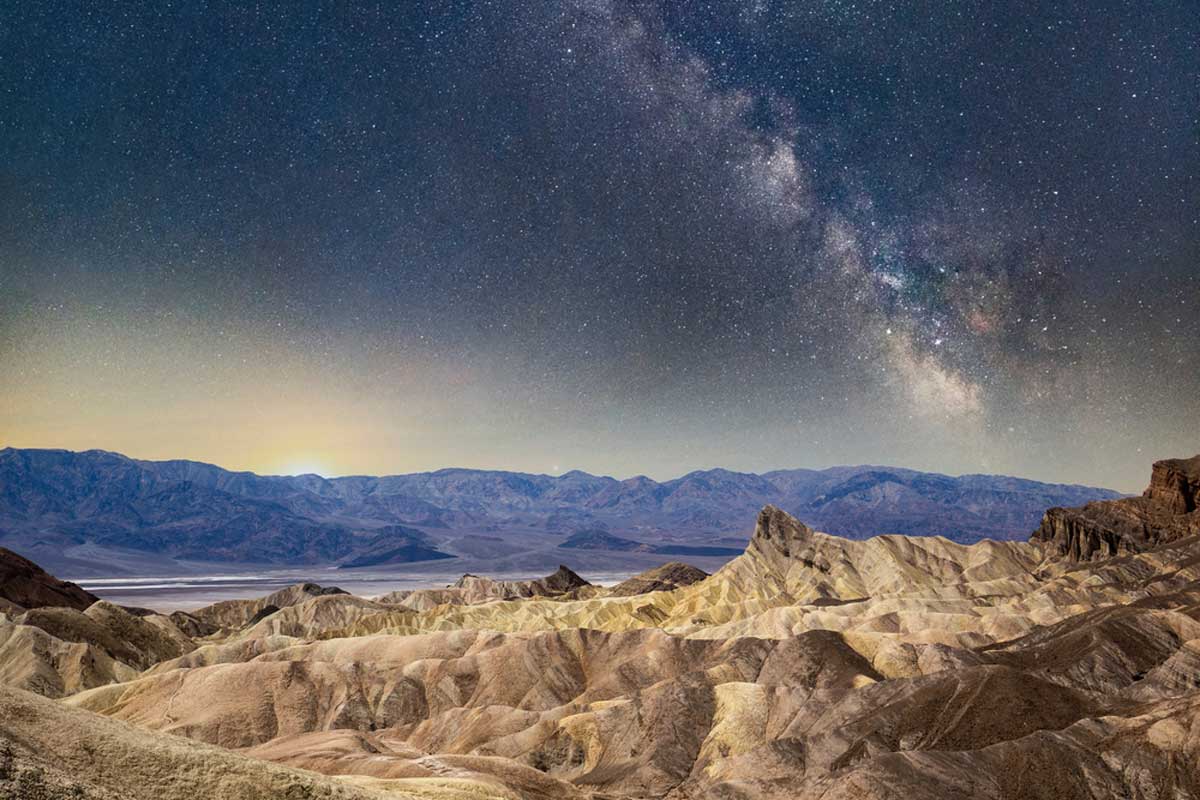
Observação da vida selvagem
Apesar do ambiente hostil do deserto, o Vale da Morte é o lar de muitas espécies de vida selvagem, incluindo carneiros selvagens, coiotes e lebres. Os melhores horários para observação da vida selvagem são no início da manhã e no fim da tarde, quando as temperaturas são mais amenas e os animais estão mais ativos.
Se tiver sorte, você pode até avistar uma rara tartaruga do deserto. Essas criaturas de movimento lento são uma parte importante do ecossistema do deserto, e avistamentos estão se tornando cada vez mais raros.
Informações e dicas para visitantes
Se você está planejando uma viagem ao Parque Nacional do Vale da Morte, há algumas coisas que você deve saber antes de ir. Aqui estão algumas dicas e informações para ajudar você a aproveitar ao máximo sua visita.
Melhor época para visitar
O outono e a primavera são as melhores épocas para visitar o Vale da Morte. Durante esses meses, as temperaturas são mais moderadas e o parque fica menos lotado. Os meses de inverno também podem ser uma boa época para visitar, pois as elevações mais altas do parque podem receber neve, criando um belo contraste com a paisagem do deserto. Se você precisar visitar durante os meses de verão, lembre-se de se manter hidratado e tomar precauções contra o calor. O parque pode atingir temperaturas de mais de 120 graus Fahrenheit, então é crucial planejar adequadamente.
Antes da sua visita, não deixe de conferir oServiço de Parques Nacionaissite para qualquer fechamento de parque ou estrada.

Taxas de entrada e licenças
Se você estiver planejando visitar o Parque Nacional do Vale da Morte, precisará pagar uma taxa de entrada. A taxa de entrada para o Parque Nacional do Vale da Morte é de US$ 30 por veículo ou US$ 25 por motocicleta e é válida por sete dias. Você também pode comprar um passe anual do parque por US$ 55, que lhe dá entrada ilimitada no parque por um ano. Permissões são necessárias para algumas atividades, como acampamento e caminhadas no interior. Se você estiver planejando acampar no parque, certifique-se de obter uma permissão e reservar seu acampamento com antecedência.
O pagamento das taxas de entrada e acampamento deve ser feito por meio de cartões de débito/crédito ou pagamentos digitais, e dinheiro não será aceito. Você pode comprar seu passe de entrada online antes de visitar o parque.
Precauções de segurança
O deserto pode ser um ambiente perigoso, então é essencial tomar as precauções necessárias ao visitar o Parque Nacional do Vale da Morte. Os visitantes devem se manter hidratados, usar protetor solar e evitar caminhadas durante as partes mais quentes do dia. Também é importante levar bastante água e lanches com você em suas caminhadas. O serviço de celular é limitado no parque, então certifique-se de avisar alguém para onde você está indo e quando planeja retornar.
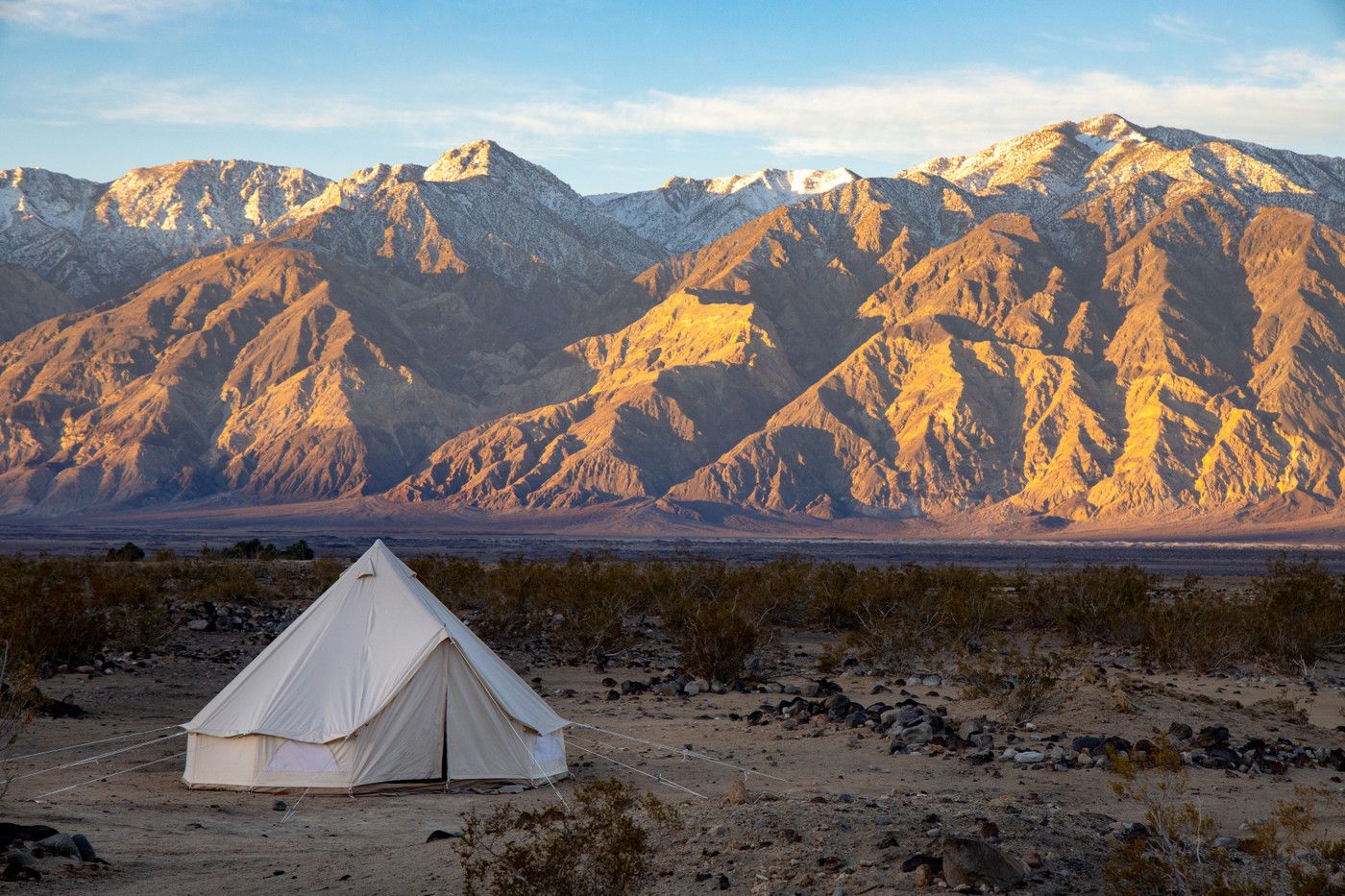
Acomodações e Camping
O Vale da Morte oferece várias opções de acomodação, incluindo hotéis, cabines e acampamentos. Furnace Creek é a área mais popular para acampar, com vários acampamentos disponíveis. Certifique-se de reservar seu espaço com antecedência, especialmente durante a alta temporada. Se você não estiver interessado em acampar, há vários hotéis e alojamentos dentro do parque, incluindoO Oásis e O Rancho.